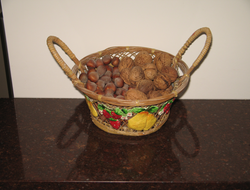Gout: health effects, treatment and management
Published: November 09, 2019
Gout is a common inflammatory arthritic condition affecting almost 2% of the population in western countries.
High blood levels of uric acid may increase your risk factors for developing gout.
Your body naturally produces uric acid as a means to remove ammonia, a product of metabolism, from your body.
Other factors may also increase your risk of gout, which in most instances is preventable and treatable.
Gender is one risk factor as gout is more common in men than women. Age is another risk factor as the risk of developing gout increases with age.
In women risk increases following menopause as decreased blood levels of estrogen appear to be associated with increased blood levels of uric acid.
Gout has been recognised as a clinical condition since 2640 BCE, included in documents written by Hippocrates in 400 BCE, and clearly defined in 1683.
Although many people may not be aware of the condition, or of factors which increase their risk of developing this arthritic condition, gout is well understood and when compared to other inflammatory arthritic conditions easily managed.
What is gout?
Gout is one of several inflammatory (rheumatoid) arthritic conditions and is characterised by high blood levels of uric acid (hyperuricaemia).
Hyperuricaemia can lead to the formation of monosodium urate crystals (tophi) which are deposited in various locations around your body, particularly within joints such as your big toe.
If not treated other joints such as your ankles, knees and elbows, can be affected. The helix of your ear may also be affected and tophi may also form in the surrounding tissues of affected joints. On rare occasions tophi may form in eyes, breast, colon, heart, and vocal cords.
Hyperuricaemia occurs when levels of uric acid build up in your blood as a result of the failure of your kidneys to remove uric acid in your urine, or abnormally high production of uric acid resulting from disrupted metabolic processes.
Uric acid is a metabolite of protein, amino acid and purine (nucleic acid) metabolism. However, it is thought that gout is primarily a disorder of purine metabolism.
When your blood/uric acid concentration levels rise about 380 micromol/L monosodium urate crystals form. Humans do not have the enzyme that breaks down monosodium urate crystals.
Three phases of gout have been identified: asymptomatic hyperuricaemia, acute attacks separated by asymptomatic periods, and chronic gouty arthritis.
Acute gout episodes are characterised by inflammation of a joint and may resolve within a few days. Inflammation is accompanied by acute pain which may begin in your toe and then extend further up your leg.
External signs of an acute attack may be peeling...link to the full article to learn more.
References
1.
Pascal Richette, Thomas Bardin Lancet 2010; 375: 318–28 Gout
2.
Dorfman. (2004). Medical Nutrition therapy for Rheumatic disorders. In Mann. K. & Escott-Stump, S. (Eds.)(2004). Krause's Food, Nutrition & Diet Therapy. (11th Ed.) Elsevier
3.
Chen , LX, H., Schumacher, R (2006). Gout: can we create an evidence-based systematic approach to diagnosis and management? Best Practice & Research. Clinical Rheumatology, 20, 4, pp. 673-684,
4.
Centre for Science in the Public Interest: June 2015, September 2015, October 2010

